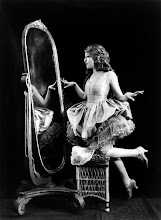
I would like to congratulate the venerable actress Greer Garson a happy 104 birthday since it was on this day in 1904 she was born. Greer won the 1943 Oscar for her lead role in I would like to congratulate the venerable actress Greer Garson a happy 103 birthday since it was on this day in 1904 she was born. Greer won the 1943 Oscar for her lead role in Mrs. Miniver and still holds the Guinness Book World Record for the longest Oscar acceptance speech. In 1942, she tied Bette Davis's record for being nominated for having five Best Actress nominees in five years. Greer also gained acclaim for her roles in Madame Curie, Mrs. Parkington, and The Valley of Decision. Younger generations might remember Greer better as the narrator of the claymation film The Little Drummer Boy.
She was considered for the role of Scarlett O'Hara in Gone with the Wind, but lost out the famed Vivien Leigh. Tutored by none other than Laurence Olivier during her theatre days in London, Greer was set up from the beginning to be a great actress. Greer also enjoyed many successful acting partnerships with Clark Gable and Walter Pidgeon.

My personal favorite role of Greer's is as Elizabeth Bennett in Pride and Prejudice. Intellectual and witty, Greer was a perfect fit for the role of Elizabeth Bennett. Greer's portrayal of the role is my second favorite, only to Jennifer Ehle in the masterful BBC mini-series. Greer captures the essence of Jane Austen's Elizabeth Bennett wonderful, from her simplest expressions to her delivery of the lines taken from Jane Austen's masterpiece and written into script form by Aldous Huxley. Laurence Olivier stars opposite Greer as Mr. Darcy, and the film features an all-star cast, including Mary Boland, Edna May Oliver, Ann Rutherford, and Edmund Gwenn. Ironically, it was Vivien Leigh who was passed over for Greer's role of Elizabeth Bennett.
Greer Garson is truly a Hollywood actress who those of today should aspire to emulate. She was a shining example of grace, beauty, and elegance in her time and devoted to the craft of acting.
 The month of October is upon us and this month I have decided to celebrate some of the shocks, screams, thrills, and chills Old Hollywood had to offer. From the terrifying long nails of Nosferatu to the hair-tingling transformation of Lon Chaney, Jr. into The Wolfman to The Master of Suspense himself, Alfred Hitchcock, Hollywood had us on the edge of our seats with fright and anticipation.
The month of October is upon us and this month I have decided to celebrate some of the shocks, screams, thrills, and chills Old Hollywood had to offer. From the terrifying long nails of Nosferatu to the hair-tingling transformation of Lon Chaney, Jr. into The Wolfman to The Master of Suspense himself, Alfred Hitchcock, Hollywood had us on the edge of our seats with fright and anticipation. Of course, there are some films whose once innovative and frightening special effects now emit laughter and certain films that missed the mark, becoming more horrible than horrifying. Still, we need to explore what it was that once made these movies so terrifying to audiences, what about audiences have changed, and the major innovations these first frightening films made that allowed for modern advancement in the movies. I like to think that even the bad films did some good, even if the only good is giving us something to laugh at.
Of course, there are some films whose once innovative and frightening special effects now emit laughter and certain films that missed the mark, becoming more horrible than horrifying. Still, we need to explore what it was that once made these movies so terrifying to audiences, what about audiences have changed, and the major innovations these first frightening films made that allowed for modern advancement in the movies. I like to think that even the bad films did some good, even if the only good is giving us something to laugh at.










_01.jpg)













